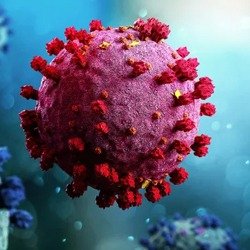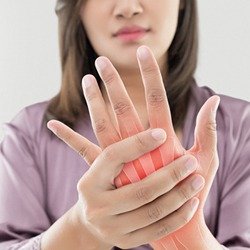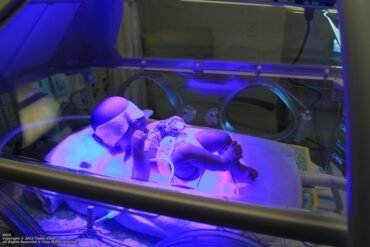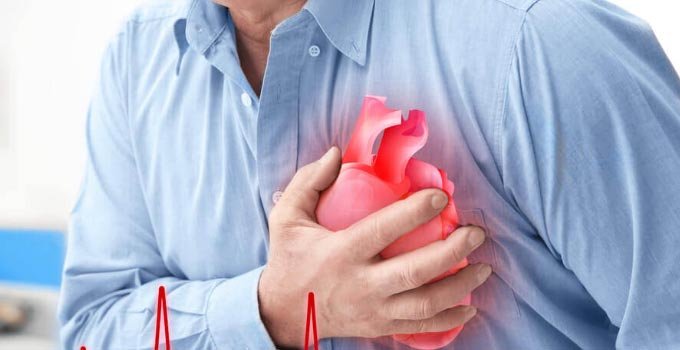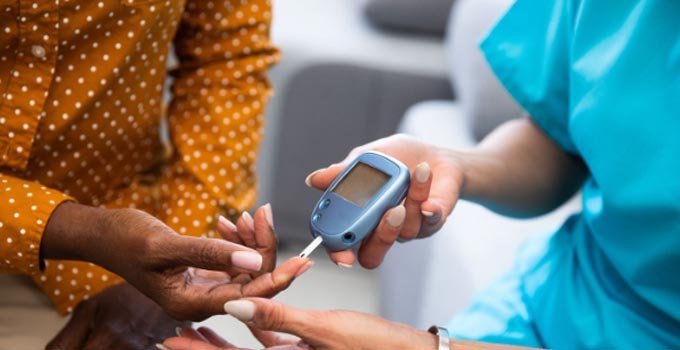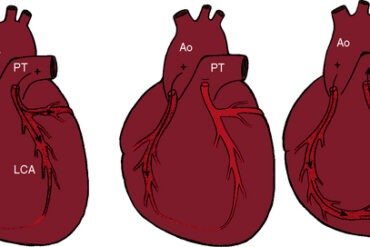Symptoms of POTS in Children: Pediatric Dysautonomia

Table of Contents
- Common Symptoms of POTS in Children
- Physical Complaints in Pediatric Dysautonomia
- Behavioral Indications of POTS in Children
- Recognizing Autonomic Dysfunction in Children
- Key Signs and Red Flags for Pediatric POTS
Common Symptoms of POTS in Children
Pediatric Dysautonomia, commonly known as Postural Orthostatic Tachycardia Syndrome (POTS), is a condition that affects the autonomic nervous system in children. It often manifests with a variety of symptoms, which can be debilitating and impact the child’s daily life. Recognizing these symptoms is crucial for early diagnosis and appropriate management.
- Dizziness and lightheadedness: Children with POTS may experience frequent episodes of feeling dizzy or lightheaded, especially upon standing up or transitioning from lying down to sitting or standing.
- Rapid heartbeat: Another common symptom of POTS is an unusually fast heart rate, even during rest or minimal physical activity.
- Chronic fatigue: Children with POTS often feel excessively tired, even after getting sufficient sleep. This fatigue is not relieved by rest and can significantly impact their quality of life.
- Shortness of breath: Some children may experience difficulty breathing or feel short of breath, particularly during physical exertion or when standing for prolonged periods.
- Chest pain: It’s not uncommon for children with POTS to complain of chest pain or discomfort, even though cardiac evaluations often reveal normal results.
- Brain fog and cognitive issues: POTS can affect a child’s cognitive function, leading to difficulties with concentration, memory, and processing information.
- Gastrointestinal issues: Symptoms such as abdominal pain, bloating, constipation, or irregular bowel movements are frequently reported in children with POTS.
- Temperature regulation problems: Some children may struggle to regulate their body temperature, experiencing heat intolerance or excessive sweating.
If your child experiences any of these symptoms regularly and they significantly interfere with their daily activities or overall well-being, it’s important to consult a pediatrician or a physician familiar with dysautonomia. Early intervention and proper management can help improve the child’s symptoms and quality of life.
Physical Complaints in Pediatric Dysautonomia
Pediatric Dysautonomia, also known as Postural Orthostatic Tachycardia Syndrome (POTS), is a disorder that affects the autonomic nervous system in children. It can lead to various physical complaints, which may significantly impact the child’s daily functioning and quality of life. Here are some common symptoms and complaints observed in children with POTS:
- Dizziness and lightheadedness: Many children with Pediatric Dysautonomia experience frequent or persistent episodes of dizziness, feeling lightheaded, or even fainting. These symptoms are often more pronounced when transitioning from lying down to standing up.
- Rapid heart rate: An excessively high heart rate, typically defined as a heart rate exceeding a certain threshold (e.g., 120 beats per minute), is a characteristic feature of POTS. This increased heart rate may occur during rest or with minimal physical exertion.
- Chronic fatigue: Children with POTS often report feeling persistently tired or fatigued, even after getting adequate sleep. This fatigue can significantly impact their ability to participate in daily activities and may lead to problems with concentration and attention.
- Exercise intolerance: Physical exertion can exacerbate symptoms in children with POTS. They may become easily fatigued or experience a rapid increase in heart rate during exercise or activities that require prolonged standing.
- Headaches: Recurrent headaches, including migraines, are common complaints in children with POTS. These headaches may be associated with other POTS symptoms or occur independently.
- Gastrointestinal issues: Many children with POTS experience gastrointestinal symptoms such as abdominal pain, bloating, nausea, and constipation. These digestive complaints can further impact their overall well-being and quality of life.
It is important to note that these physical complaints can vary in intensity and frequency among different individuals with Pediatric Dysautonomia. It is always recommended to consult a healthcare professional to receive an accurate diagnosis and tailored management plan for each child. Treatment options may include lifestyle modifications, medication, physical therapy, and other targeted interventions to alleviate symptoms and improve the child’s overall well-being.
Behavioral Indications of POTS in Children
Pediatric Dysautonomia, also known as Postural Orthostatic Tachycardia Syndrome (POTS), is a condition characterized by an abnormal autonomic nervous system response to changes in posture, leading to a rapid increase in heart rate. While the physical symptoms of POTS are well-documented, it is important to also recognize the behavioral indications that may suggest the presence of this condition in children.
Here are a few behavioral signs that may be seen in children with POTS:
- Reduced Physical Activity: Children with POTS may exhibit a reluctance to engage in physical activities or experience difficulty participating in usual exercises or sports. This is primarily due to the ongoing symptoms, such as dizziness, fatigue, and weakness, that can worsen during physical exertion.
- Anxiety and Mood Changes: POTS can often be accompanied by feelings of anxiety, depression, and changes in mood. Children may appear irritable, have trouble sleeping, or experience sudden mood swings as a result of the condition’s impact on their daily lives.
- Cognitive Impairment: POTS can affect a child’s ability to concentrate, learn, and remember information. They may struggle academically and experience frequent “brain fog,” which can lead to frustration and a decline in school performance.
- Social Isolation: Due to the limitations imposed by POTS symptoms, children may withdraw from social activities, both at school and with friends. They may miss out on important social interactions, leading to feelings of loneliness and isolation.
- Changes in Appetite and Sleep Patterns: POTS can disrupt normal eating and sleeping patterns in children. They may experience a decrease or increase in appetite, have difficulty falling asleep or staying asleep, or wake up feeling unrefreshed despite adequate rest.
- Orthostatic Intolerance: Children with POTS often have difficulty being upright without experiencing symptoms. They may complain of lightheadedness, fainting, or headaches when standing for prolonged periods or changing positions frequently.
Recognizing these behavioral indications can be crucial in identifying POTS in children and seeking appropriate medical care. Early diagnosis and management can greatly improve a child’s quality of life and alleviate the impact of symptoms on their daily functioning.
If you suspect that your child may be displaying these behavioral signs, it is important to consult with a healthcare professional, preferably one with expertise in pediatric dysautonomia, for a thorough evaluation and accurate diagnosis.
Recognizing Autonomic Dysfunction in Children
When it comes to understanding autonomic dysfunction in children, it is important to recognize the symptoms associated with conditions like Pediatric Orthostatic Intolerance Syndrome (POTS). By familiarizing yourself with these symptoms, you can help identify potential issues and seek appropriate medical attention for your child.
Here are some common symptoms to be aware of:
- Dizziness or lightheadedness upon standing
- Fainting or feeling close to fainting
- Rapid heart rate or palpitations
- Extreme fatigue or weakness
- Exercise intolerance
- Headaches or migraines
- Difficulty concentrating or brain fog
- Gastrointestinal issues (such as nausea, stomach pain, or constipation)
- Temperature dysregulation (feeling too hot or too cold)
- Excessive sweating or absence of sweating
If your child frequently experiences these symptoms, it is vital to consult with a healthcare professional who specializes in autonomic disorders. These symptoms can significantly impact a child’s quality of life and may require appropriate diagnosis and management.
During medical evaluations, tests may be conducted to assess autonomic function, such as a tilt table test, where the child’s heart rate and blood pressure are monitored in different positions. Additionally, detailed medical history and symptom evaluation will help determine the most appropriate course of action.
It is important to understand the potential impact of autonomic dysfunction on a child’s daily activities, school performance, and emotional well-being. Chronic symptoms can be not only physically debilitating but also emotionally overwhelming for both the child and their family.
If your child receives a diagnosis of autonomic dysfunction or a condition like POTS, various treatment options may be explored. These can include lifestyle modifications, medications, physical therapy, and individualized management plans to address the specific needs of the child.
Remember, early recognition and appropriate management are key to helping children with autonomic dysfunction lead fulfilling lives.
Key Signs and Red Flags for Pediatric POTS
Pediatric Dysautonomia, also known as POTS (Postural Orthostatic Tachycardia Syndrome), is a condition that affects the autonomic nervous system in children. It can lead to a range of symptoms, significantly impacting a child’s daily life. Recognizing the key signs and red flags associated with Pediatric POTS is crucial for early diagnosis and timely intervention. Here are some symptoms commonly observed in children with POTS:
- Dizziness or lightheadedness upon standing up
- Fainting or near-fainting episodes
- Rapid heart rate, especially when standing
- Chronic fatigue or extreme tiredness
- Exercise intolerance
- Headaches or migraines
- Brain fog or difficulty with concentration and memory
- Palpitations or irregular heartbeat
- Chest pain or discomfort
- Gastrointestinal issues like nausea, vomiting, or abdominal pain
- Shortness of breath or difficulty breathing
If your child is experiencing any of these symptoms regularly, it is important to consult a healthcare professional for a thorough evaluation. Early intervention can significantly improve the quality of life for children with Pediatric POTS and help prevent long-term complications. Additionally, it is essential to be aware of certain red flags that may indicate a more severe presentation of the condition:
- Sudden and severe onset of symptoms
- Loss of consciousness or seizures
- Significant weight loss or difficulty maintaining weight
- Severe abdominal pain or blood in stool
- Worsening symptoms despite medication or lifestyle changes
If any of these red flags are present, immediate medical attention is necessary to rule out other underlying medical conditions and ensure appropriate management of Pediatric POTS. Remember, identifying the signs and red flags early on and seeking medical guidance promptly can make a significant difference in managing and improving the long-term outcomes of Pediatric POTS in children.

